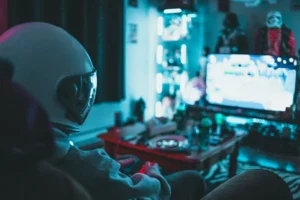Welcome to the intersection of artistry and innovation! Virtual reality (VR) art is revolutionizing the way we perceive and create art. In this immersive realm, artists harness cutting-edge technology to craft captivating experiences that transcend traditional mediums.

Join us as we explore the boundless possibilities of VR art and discover how it merges creativity with technology in unprecedented ways.
Exploring Virtual Reality Art
The Evolution of VR Art
From its humble beginnings to its current state-of-the-art capabilities, VR art has come a long way. Initially used for gaming and simulations, VR technology has now expanded into the realm of art, offering artists an entirely new canvas to express themselves.
Creating in the Virtual Realm
VR art allows artists to sculpt, paint, and design in three-dimensional space, breaking free from the constraints of traditional methods. With VR tools and platforms, creators can manipulate digital objects with precision and immerse themselves in their creations like never before.
Experiencing VR Art
For audiences, experiencing VR art is a transformative journey. Through VR headsets, viewers can step into virtual galleries, interact with artworks, and even collaborate with artists in real-time. This immersive experience transcends the boundaries of physical space, inviting spectators to become active participants in the artistic process.
The Impact of VR Art
Pushing Boundaries and Inspiring Innovation
VR art challenges conventional notions of artistry and encourages experimentation. Artists are pushing the boundaries of what is possible, inspiring new forms of creativity and innovation across disciplines.
Accessibility and Inclusivity
One of the most significant advantages of VR art is its accessibility. With VR headsets becoming more affordable and accessible, people from all walks of life can engage with art in ways previously unimaginable. Additionally, VR art offers opportunities for inclusivity, allowing individuals with physical disabilities to participate in the artistic process.
Revolutionizing Art Education
VR technology is transforming art education by providing students with immersive learning experiences. Through virtual tutorials and workshops, aspiring artists can hone their skills in a dynamic and interactive environment, fostering creativity and skill development.
Conclusion
Virtual reality art is a testament to the limitless potential of human imagination and technological innovation. By merging creativity with cutting-edge technology, VR art opens doors to new artistic horizons and redefines the way we engage with art. As the VR landscape continues to evolve, we can expect even more groundbreaking developments that will shape the future of artistic expression.
FAQs
Q1: What equipment do I need to experience VR art?
A1: To experience VR art, you’ll need a VR headset compatible with your device, such as Oculus Rift, HTC Vive, or PlayStation VR. Additionally, you’ll need a computer or gaming console capable of running VR applications.
Q2: Can anyone create VR art, or do you need specialized skills?
A2: While some familiarity with VR technology may be beneficial, anyone with a passion for creativity can create VR art. Many VR platforms offer user-friendly tools and tutorials to help beginners get started.
Q3: Is VR art only for digital artists, or can traditional artists also benefit from it?
A3: VR art is for artists of all backgrounds and disciplines. Traditional artists can explore new techniques and mediums in the virtual realm, while digital artists can leverage VR technology to enhance their workflow and expand their artistic repertoire.
Q4: Are there opportunities for showcasing VR art in traditional galleries?
A4: Yes, VR art can be showcased in traditional galleries through VR exhibitions and installations. These immersive experiences allow audiences to engage with art in a unique and memorable way.
Q5: How is VR art shaping the future of the art industry?
A5: VR art is reshaping the art industry by democratizing access to art, fostering collaboration and innovation, and redefining the boundaries of artistic expression. As VR technology continues to advance, we can expect to see even more groundbreaking developments in the field of VR art.
